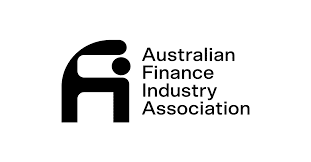By Evan Spicer
Director of Cryptocurrency Investigations
MyChargeBack
Ethereum 2.0: A New Era for the Second-Largest Cryptocurrency
The launch of Ethereum 2.0 on November 15 marked a pivotal moment in the evolution of blockchain technology. This highly anticipated upgrade represents a shift from the energy-intensive proof-of-work (PoW) consensus mechanism to the more sustainable proof-of-stake (PoS) consensus model. Ethereum 2.0 introduces several key advancements that address longstanding challenges:
Scalability
The ability of Ethereum 2.0 to process thousands of transactions per second vastly improves the network’s scalability. This enhanced throughput not only facilitates quicker and more cost-effective transactions but also opens doors for the development of complex and diverse decentralized applications (DApps). This is a crucial step towards making blockchain technology more practical for everyday use.
Security
The transition to Ethereum 2.0 brings a significant boost in network security. With the implementation of proof-of-stake and the introduction of sharding—a technique that divides the blockchain into smaller, interconnected parts—Ethereum becomes more resilient against potential attacks. The decentralized nature of sharding reduces the risk of a single point of failure, ensuring a more robust and secure ecosystem.
Energy Efficiency
One of the most notable features of Ethereum 2.0 is its improved energy efficiency. By eliminating the need for miners to perform resource-intensive computations, the network becomes more environmentally friendly. This aligns with the growing global emphasis on sustainable practices in the cryptocurrency space, making Ethereum 2.0 an attractive option for those conscious of the ecological impact of blockchain networks.
The successful deployment of Ethereum 2.0 is expected to catalyze increased innovation and adoption of decentralized applications, further solidifying Ethereum’s position as a leading blockchain platform.
MetaCoin: A New Cryptocurrency by Meta
Meta’s announcement on November 22nd regarding the launch of MetaCoin introduces a groundbreaking integration of social media and blockchain technology. As the parent company of major platforms like Facebook, Instagram, WhatsApp, and Oculus, Meta’s foray into the cryptocurrency space adds a new dimension to the evolving landscape. MetaCoin is designed with several key features that set it apart:
Interoperability
MetaCoin’s compatibility with multiple blockchains and protocols is a strategic move that enhances its versatility. Users can seamlessly transfer and exchange MetaCoin across various networks, fostering a more interconnected and accessible financial ecosystem.
Usability
Integration with Meta’s extensive suite of products ensures MetaCoin’s seamless integration into users’ daily lives. From social interactions on Facebook to immersive experiences on Oculus, MetaCoin becomes a unified currency for a range of digital activities, from peer-to-peer transactions to accessing digital content.
Inclusion
MetaCoin’s commitment to accessibility positions it as a tool for financial inclusion. With Meta’s widespread user base, MetaCoin has the potential to bring financial services to billions of people worldwide who were previously underserved or excluded from traditional banking systems.
MetaCoin’s launch aligns with Meta’s broader vision of creating a metaverse—an interconnected virtual reality where users can interact with each other and digital content. The integration of a stablecoin like MetaCoin is a crucial step in establishing a unified digital economy within the metaverse.
Bitcoin: The King of Cryptocurrencies Breaks New Records
November 28 marked a historic moment for Bitcoin, as it is widely presumed to reach a new all-time high of $100,000 per coin by 2024. This surge is attributed to a combination of factors that collectively contribute to Bitcoin’s growing prominence:
Institutional Adoption
The increasing acceptance of Bitcoin by institutional investors and corporations plays a pivotal role in its upward trajectory. Companies like MicroStrategy, Tesla, Square, and Fidelity have not only invested in Bitcoin but have also signaled its legitimacy as a store of value and an alternative asset class.
Regulatory Clarity
The clarity provided by regulators in various jurisdictions has created a more favorable environment for Bitcoin. As governments outline frameworks for the legal and regulated use of cryptocurrencies, investor confidence grows, and Bitcoin’s position as a legitimate financial asset solidifies.
Limited Supply
Bitcoin’s inherent scarcity, with a maximum supply capped at 21 million coins, is a fundamental driver of its value. The scheduled halving events, which reduce the rate of new Bitcoin creation, contribute to its rarity, making it an attractive hedge against inflation and economic uncertainty.
Global Economic Conditions
Bitcoin’s role as a hedge against inflation gains prominence amid global economic challenges. Investors turn to Bitcoin as digital gold, seeking a store of value that transcends traditional financial systems.
If and when Bitcoin surpasses the $100,000 mark, it will further establish itself as a resilient and valuable asset class, attracting both institutional and retail investors seeking a decentralized and secure store of value.
NFTs: A Creative Boom in the Digital Art World
November 2023 witnessed the continued ascent of Non-Fungible Tokens (NFTs) as a mainstream form of digital art and collectibles. The momentum behind NFTs is driven by a series of noteworthy developments:
Record-Breaking Sales
Prominent digital artists and celebrities embracing NFTs contribute to unprecedented sales and auctions. The digital art space experiences a surge in value as unique digital assets, including virtual real estate and exclusive digital content, fetch remarkable prices in the market.
Integration into Traditional Markets
NFTs transcend their digital origins and make their mark in traditional art markets. Recognized art institutions acknowledge the legitimacy of digital artworks, incorporating them into their collections and auction houses. This integration bridges the gap between traditional and digital art, further validating NFTs as a legitimate form of artistic expression.
NFT Marketplaces and Platforms
The NFT ecosystem expands with the emergence of new marketplaces and platforms. These platforms provide artists with additional avenues to showcase and monetize their work. The democratization of the art world becomes more evident as artists reach global audiences without traditional gatekeepers.
The influence of NFTs extends beyond the art sector, impacting industries such as gaming, music, entertainment, and virtual real estate. As blockchain technology continues to empower creators and redefine ownership in the digital age, NFTs are poised to play a central role in the future of the creative economy.
November 2023 served as a landmark month in the cryptocurrency space, witnessing major technological upgrades, groundbreaking announcements from industry giants like Meta, significant milestones in the price of Bitcoin, and the continued rise of NFTs as a transformative force in the digital art world. These developments collectively shape the narrative of a dynamic and evolving crypto landscape, hinting at a future where blockchain technology becomes increasingly integrated into various aspects of our daily lives.






